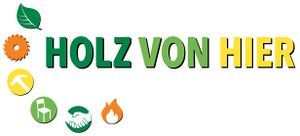Low Carbon Timber/en: Unterschied zwischen den Versionen
(Die Seite wurde neu angelegt: „Wood consists to a large extent of carbon and has bound CO2 during growth. Low Carbon Timber does not therefore mean that the wood contains little CO2, but rat…“) |
|||
| (3 dazwischenliegende Versionen desselben Benutzers werden nicht angezeigt) | |||
| Zeile 1: | Zeile 1: | ||
| + | <languages /> | ||
| Zeile 5: | Zeile 6: | ||
Wood consists to a large extent of carbon and has bound CO2 during growth. Low Carbon Timber does not therefore mean that the wood contains little CO2, but rather that little CO2 has been emitted during the production of the wood product. The less CO2 is emitted until the product is finished, the better the balance and the more of the wood's positive storage effect is retained. With some origins, more CO2 has been emitted than is bound in the wood, thus nullifying the storage or sink effect. | Wood consists to a large extent of carbon and has bound CO2 during growth. Low Carbon Timber does not therefore mean that the wood contains little CO2, but rather that little CO2 has been emitted during the production of the wood product. The less CO2 is emitted until the product is finished, the better the balance and the more of the wood's positive storage effect is retained. With some origins, more CO2 has been emitted than is bound in the wood, thus nullifying the storage or sink effect. | ||
| − | + | Transport plays a major role here, especially for wood products ([[Klimaschutz durch Holz der kurzen Wege| Climate protection through wood of short distances]]). But it is not so easy to find out how far the wood has been transported from the forest, because you cannot tell how far the wood has travelled. However, there is now a system in place to record the transport distances from the forest to the end customer and to label products that have been produced with above-average short distances. The eco-label and the proof of origin of wood from Hier Hier document such particularly environmentally friendly wood products. The system of wood from here is the only border-independent and transnationally functioning certification system. In the "German-speaking" area, products or buildings labelled in this way are marked with '''HOLZ VON HIER''', in the rest of Europe with '''LOW CARBON TIMBER'''. Therefore there are two versions of the protected umbrella brand, which are shown below. | |
| − | [[Datei:Holz-von-Hier-Logo.jpeg|300px|thumb|left| | + | [[Datei:Holz-von-Hier-Logo.jpeg|300px|thumb|left|Version in German-speaking countries]] |
| − | [[Datei:Lowcarbtimber.jpg|300px|thumb|right| | + | [[Datei:Lowcarbtimber.jpg|300px|thumb|right|Version in Europe]] |
Aktuelle Version vom 28. April 2020, 22:51 Uhr
Low Carbon Timber
Wood consists to a large extent of carbon and has bound CO2 during growth. Low Carbon Timber does not therefore mean that the wood contains little CO2, but rather that little CO2 has been emitted during the production of the wood product. The less CO2 is emitted until the product is finished, the better the balance and the more of the wood's positive storage effect is retained. With some origins, more CO2 has been emitted than is bound in the wood, thus nullifying the storage or sink effect.
Transport plays a major role here, especially for wood products ( Climate protection through wood of short distances). But it is not so easy to find out how far the wood has been transported from the forest, because you cannot tell how far the wood has travelled. However, there is now a system in place to record the transport distances from the forest to the end customer and to label products that have been produced with above-average short distances. The eco-label and the proof of origin of wood from Hier Hier document such particularly environmentally friendly wood products. The system of wood from here is the only border-independent and transnationally functioning certification system. In the "German-speaking" area, products or buildings labelled in this way are marked with HOLZ VON HIER, in the rest of Europe with LOW CARBON TIMBER. Therefore there are two versions of the protected umbrella brand, which are shown below.


